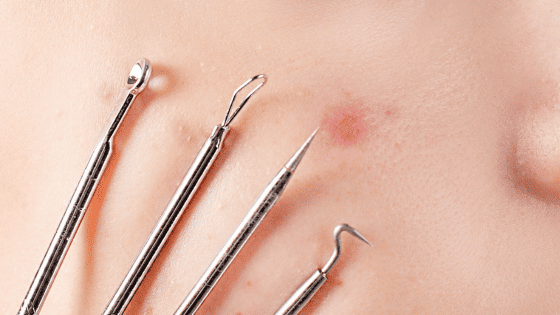Before I start with this post, try this electrifying "coffee fat-burning trick” that can boost your health, metabolism and energy at the same time by just drinking your favorite drink.. coffee!
If you’re like most women trying to lose weight… you diet, you count calories, you tear up the treadmill, and…nothing.That’s how I was was feeling…
I did “everything right” and never lost an inch. My Energy was gone..
Until I stumbled on this delicious electrifying "coffee fat-burning trick” and electrifying my metabolism and torched off fat from my problem areas in just 13 days by drinking Coffee.
And because of this one simple shift in my eating, I shed pounds and inches from my body without starving myself and without a lick of exercise!
With the same “reduce hunger” trick I dropped a good amount of weight in the FIRST month and I shocked my doctor by completely reversing ALL pre-diabetes symptoms!
If you’re a woman over the age of 25 who wants to reclaim your life inside the body you DESERVES, you should check it out for yourself.
Articles My Readers Are Loving Right Now:
- This Pineapple Water Will Detoxify Your Body, Help You Lose Weight, And Reduce Joint Swelling And Pain!
- Wash Your Face with Coconut Oil and Baking Soda 3 Times a Week and This Will Happen in a Month!
- Get a Clean Face Free Of Pores Using This Amazing Natural Ingredient!
- This Homemade Face Mask Tightens Your Skin Better Than Botox
- How To Get Rid Of Wrinkles Using Coconut Oil
- Remove Unwanted Hair Permanently In Three Days , No Shave-No Wax !!!!
How Are Blackheads Treated. Acne has a kind known as blackheads, often known as open comedones. If oil and WORN OUT skin cells accumulate on your skin and obstruct your pores, blackheads will appear.
If you squeeze one, you’ll probably discover others to remove, leaving your skin itchy, blotchy, and pinched from the prodding. Although it feels good to squeeze a blackhead, touching the region can harm the skin’s protective layer, causing swelling and scarring.
Different procedures can help remove blackheads rather than squeezing them. Typically, first-line therapies include antibiotics, retinoids, and chemical exfoliators. A dermatologist might advise microdermabrasion, comedo extraction, chemical peels, or laser treatments if such treatments don’t work.
How Are Blackheads Treated For Your Awesome Look

How Do Blackheads Occur?
Acne has a subtype called blackheads. According to Rachel Nazarian, MD, a dermatologist located in New York, your skin regularly sheds off dead skin cells, clogging your pores, and secreting sebum, an oil that combines with these cells.
That procedure, also known as your skin’s natural exfoliation, aids in shielding you from the outside world. On your nose, cheeks, chin, and ears, though, you can start to notice dark pores developing as a result.
Blackheads, open pores that clog with sebum and dead skin, are those dark pores. Clear and oily blackheads are visible. The pores, on the other hand, turn black when exposed to oxygen.
Why do blackheads appear?
Acne often develops when something accumulates on the skin and plugs the pores. Depending on what causes pore clogging, many forms of acne exist.1 Excess oil and dead skin cells clog the pores when you have blackheads.
Blackheads can appear on everyone. However, some elements raise your risk, including:3
Blackhead risk is influenced by hormones, which can change during adolescence, the menstrual cycle, and pregnancy.
For instance, levels of androgens, or male sex hormones, increase during puberty. Sebum-producing glands enlarge as a result of androgens.
Genetics: If you or a member of your family has acne, your risk of developing blackheads may rise.
Certain drugs, like lithium and corticosteroids, can change your hormones and raise your risk of developing blackheads.
Age: While blackheads can affect anyone at any age, adolescents are more likely than others to experience them.
Getting Rid Of Blackheads
In order to lessen the accumulation of oil and WORN OUT skin cells clogging the pores, a dermatologist may suggest various treatments, including topical and oral drugs. Usually, it takes six to eight weeks for patients to notice improvements in their skin.4
Antibiotics
Antibiotics may be helpful in moderate to severe cases of acne even if it is not an infection.5 An oral or topical antibiotic prescription may be given by a dermatologist. Doxycycline and erythromycin are two examples of antibiotics that help lessen inflammation and skin bacteria.
People who have blackheads typically don’t take antibiotics for very long. However, in order for antibiotics to be effective, you must always take the full course.
Additionally, physicians frequently suggest combining antibiotics with additional therapies such as benzoyl peroxide. Antibiotics may become less effective when taken alone.
Retinoids
Topical and oral medications known as retinoids are made from vitamin A. Retinoids used topically include trifarotene, tazarotene, and tretinoin. Isotretinoin, on the other hand, is an oral retinoid that handles severe instances.7 According to Dr. Zeichner, retinoids clear pores, promote cell turnover, and even out skin texture.
A physician could suggest treating blackheads and gradually incorporating a topical retinoid into your skincare routine. As an illustration, you can begin by using a little dose every other day. You’ll eventually utilize the product every day.
Sun sensitivity is another negative effect of retinoids. Most likely, a dermatologist will urge you to apply sunscreen every day.
Remember that stacking an acid, such as salicylic acid, with a retinoid is not recommended. Both products may irritate and inflame the skin as they exfoliate it. Alternately, space out your applications. Try utilizing your acid-containing products during the day and your retinoids at night, for instance.
Exfoliators and Cleansers
Physical exfoliation can smooth out and brighten your complexion. But manually exfoliating your skin won’t get to the keratin and sebum in your pores. Dr. Nazarian claims that as a result, the technique will not effectively treat blackheads.
Instead, use chemical exfoliators that work to remove pore-clogging material and target blackheads. As an alternative, pick items that contain salicylic acid, azelaic acid, or benzoyl peroxide.
For instance, according to Joshua Zeichner, MD, an associate professor of dermatology at Mount Sinai’s Icahn School of Medicine, “[salicylic acid] removes excess oil and exfoliates dead skin cells from the skin’s surface to dry out pimples and clear out the pores.”
One of those chemical exfoliators may be combined with an antibiotic or topical retinoid, according to a dermatologist.8 But remember to give them some room when you apply them.
.
Microdermabrasion
Microdermabrasion is a procedure that can be done at home or at a dermatologist’s office. To treat blackheads, both options exfoliate the skin. In contrast to at-home remedies, a dermatologist can reach deeper layers of the skin.9
A dermatologist takes off the top layer of your skin using an instrument. The affected areas will thereafter receive a gentle moisturizer application. The whole operation lasts between 30 and 40 minutes.
People typically receive five to sixteen sessions. You need to treat your skin with additional care after each session. A part of aftercare is protecting your skin from the sun and gently hydrating it. You might notice a swelling, pinking, or reddening of your face.10
Extraction of Comedos
Despite dermatologists’ advice to the contrary, blackheads can be safely removed by popping them. Blackheads are removed by a dermatologist using comedo extraction and sterile tools.
People typically have comedo extraction after other therapies are unsuccessful. Extraction of comedones, however, does not remove blackheads. In order to stop acne from returning, you must maintain a good skin care routine in addition to other treatments.
Eleven Chemical Peel
Chemical peels can help get rid of wrinkles and fine lines. In addition, chemical peels are used by dermatologists to remove blackheads.
Chemical peels come in several forms. You would need general anesthesia, for instance, if you had a thorough peel. The chemical peel will then be delicately applied by the dermatologist in segments. The dermatologist will next dress the injured regions with surgical dressings.
A light peel, on the other hand, doesn’t need anesthesia. After the peel, a dermatologist will advise applying a soft lotion and a cool compress to the face.13 Laser Procedures
When used in conjunction with other techniques, laser therapy can effectively treat blackheads. Only certain types of lasers can remove blackheads, though. For instance, neither visible nor infrared light can be used to cure blackheads.
On the other hand, using a vacuum and an intense pulsed light (IPL) laser, photo pneumatic therapy lessens blackheads by eliminating oil and dead skin cells.
According to some statistics, it may take numerous sessions to achieve the best results. Additionally, laser therapy may cause mild adverse effects including stinging and burning. Rarely do lasers cause burns, blisters, or excruciating agony.14
resist touching your face: No matter how enticing it may be, resist attempting to squeeze the blackheads out on your own, advises dermatologist Debra Jaliman, MD, of New York. Getting rid of blackheads could spread bacteria across your skin and cause an illness.
Make use of products that won’t clog your pores: Pick goods that are oil-free and noncomedogenic. The word “non-comedogenic” refers to a product that won’t clog your pores, according to Dr. Zeichner.
Be consistent. Similar to the blackhead removal products, your skin care program should be constant. For instance, retinoids and salicylic acid are useful for clearing out blackheads. You must continue using them, Dr. Nazarian noted, in order to prevent your pores from reopening.
Keep your hair out of your face: Your hair may also be a contributing factor to blackheads. Dr. Zeichner explained that if you have bangs or a fringe, the oil that accumulates on your hair can clog your pores.
A Brief Overview
Blackheads are a type of acne that appear when oil and WORN OUT skin cells accumulate on the skin and block the pores. Blackheads can be treated using a variety of methods, such as antibiotics, retinoids, and chemical exfoliators. The majority of blackheads disappear in six to eight weeks. Get in touch with a dermatologist if your blackheads persist for more than eight weeks.

What to read next? I’ve got you!
Try this electrifying "coffee fat-burning trick” that can boost your health, metabolism and energy at the same time by just drinking your favorite drink.. coffee!
If you’re like most women trying to lose weight… you diet, you count calories, you tear up the treadmill, and…nothing.That’s how I was was feeling…
I did “everything right” and never lost an inch. My Energy was gone..
Until I stumbled on this delicious electrifying "coffee fat-burning trick” and electrifying my metabolism and torched off fat from my problem areas in just 13 days by drinking Coffee.
And because of this one simple shift in my eating, I shed pounds and inches from my body without starving myself and without a lick of exercise!
With the same “reduce hunger” trick I dropped a good amount of weight in the FIRST month and I shocked my doctor by completely reversing ALL pre-diabetes symptoms!
If you’re a woman over the age of 25 who wants to reclaim your life inside the body you DESERVES, you should check it out for yourself.

